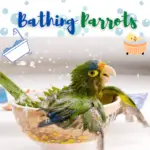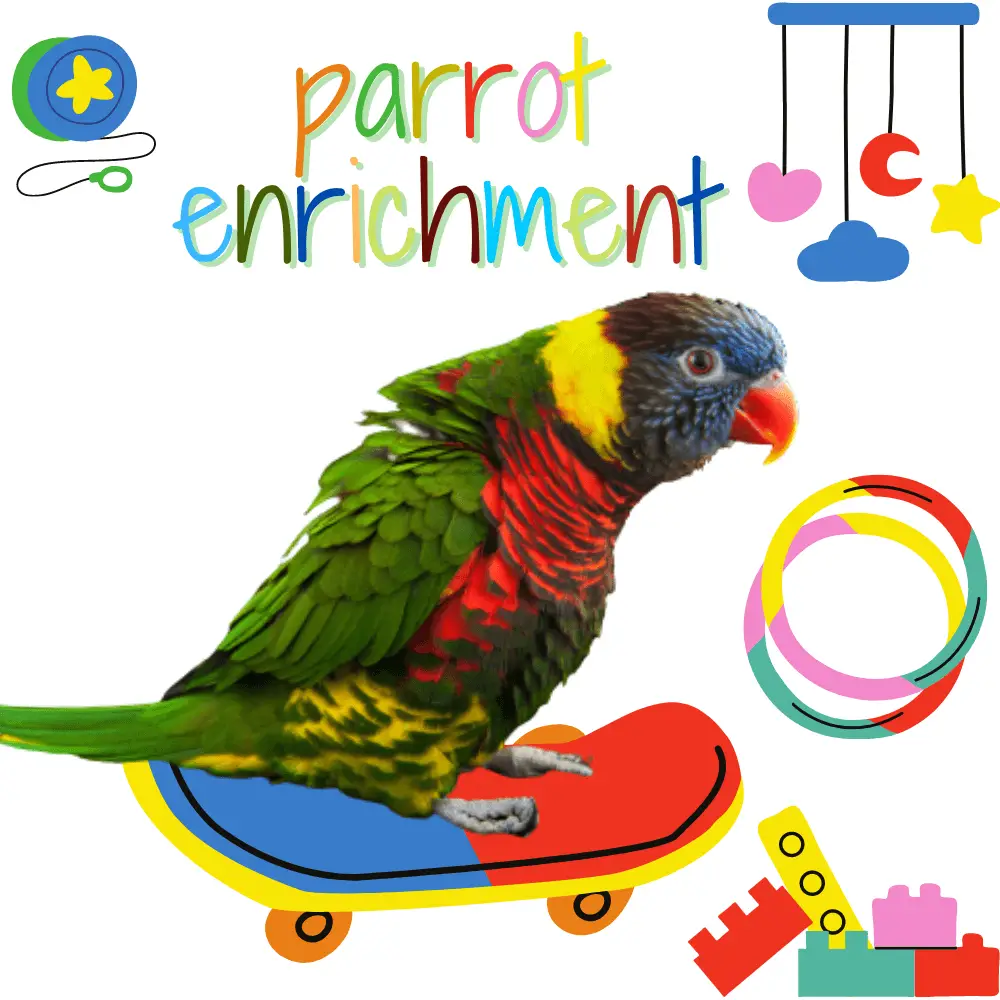
Parrot enrichment: Environmental enrichment is about providing the bird with opportunities to play, socialize, hide and take up time.
This improves their mental well-being by simulating natural living conditions and stimulating them intellectually. Enrichment is not complex to put in place but is essential to parrots.
Indeed, parrots are very intelligent birds that can, if they are bred in captivity, present deleterious behaviors for themselves (pecking, stereotyping, self-mutilation, etc …) or for their owner (aggressiveness, phobias, etc …).
This is especially the case in pet parrots who are alone in an aviary and do not benefit from the social interactions of a group, and even more so for EAM parrots who are too dependent on their owner and who do not know anymore.
to occupy without him. The enrichment thus allows to propose to these birds many choices of activities that will enable them to express their natural behaviors:
exploration, rest, maintenance of the plumage, movements, theft, destruction of objects with the beak, vocalizations, etc. (RUPLEY, SIMONE-FREILICHER 2015).
One of the main sources of boredom in captivity is the lack of foraging which is presented in a feeder often placed in the same place in the cage.
In the wild, some parrots can spend up to 88% of their time awake in search of food (RUPLEY, SIMONE-FREILICHER 2015).
In captivity, it is important to recreate situations to encourage the bird to explore its environment and thus occupy its time: it is foraging.
For this, the owner has at his disposal many simple tools (hide food in the substrate or in balls of newsprint) to the most advanced (“manger-puzzle” available commercially where the bird must solve a puzzle or a labyrinth to recover the treat).
Studies show that the bird’s time spent foraging can be increased by 2 to 2.5 times using these tools (VAN ZEELAND et al., 2013), which significantly reduces the time the parrot remains idle.
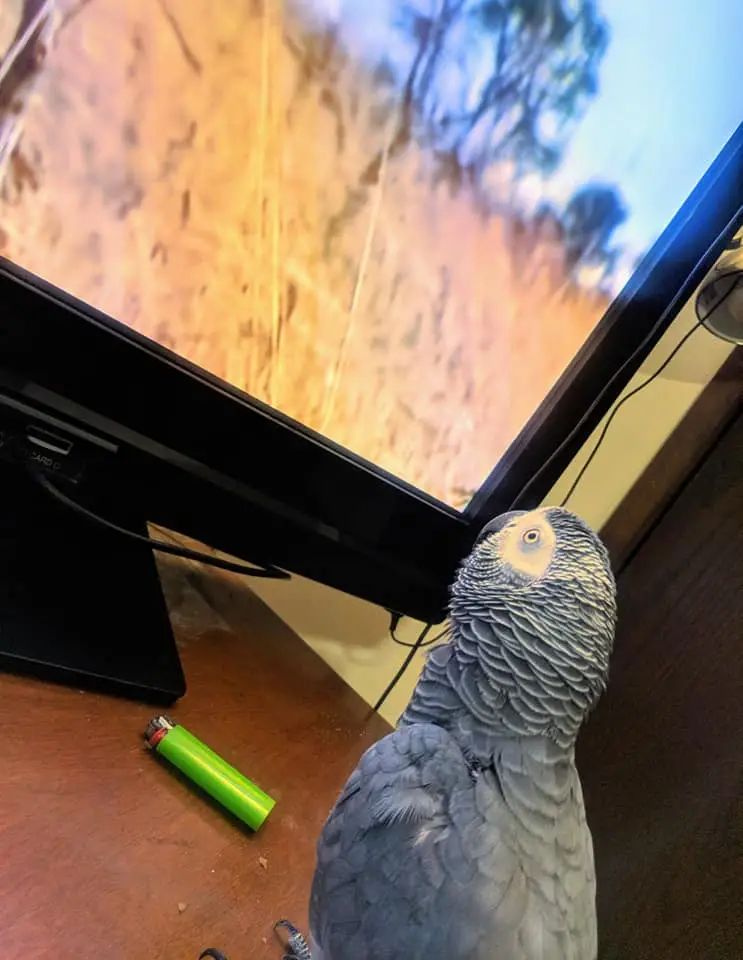
Parrot toys
Why do birds need enrichment?
How can I make my bird comfortable?
How do you make a bird-safe in a room?
Enrichment of the bird’s living environment
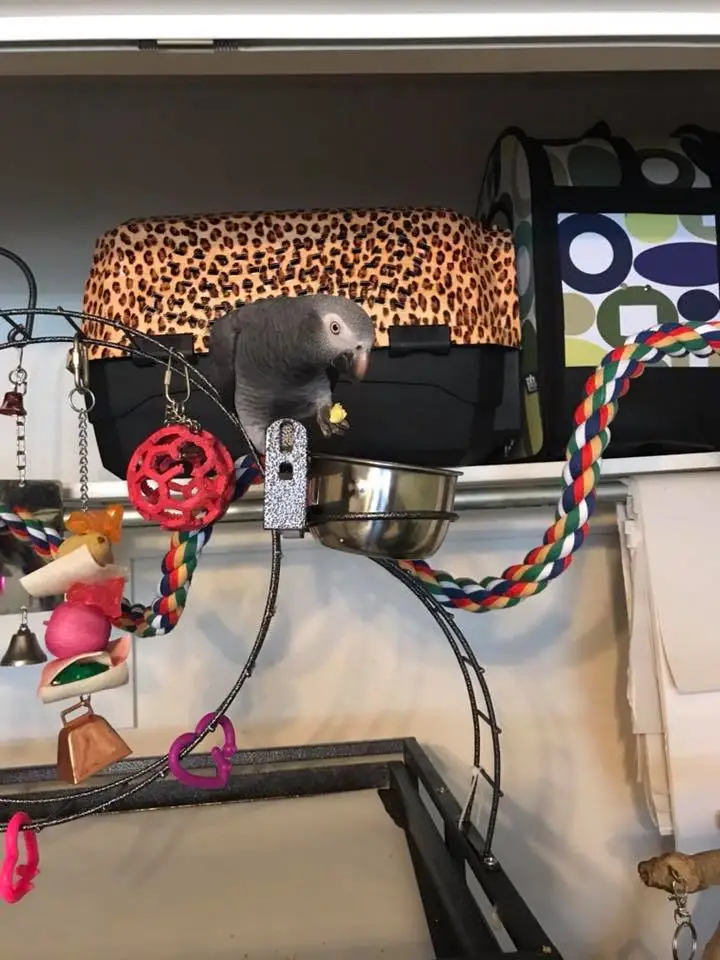
Here are some enrichment ideas that the veterinarian can offer to the parrot owner:
- Foraging: hiding food in the substrate, in a crumpled newspaper, in “puzzle feeders” or whatever to force the parrot to forage for food
- Wooden games, leather thongs, ropes, bells … (see figure 36) Be careful, they will have to be changed frequently because the parrots will have fun destroying them. In addition, renewing games and placing new ones is already an enrichment in itself.
Parrot enrichment ideas
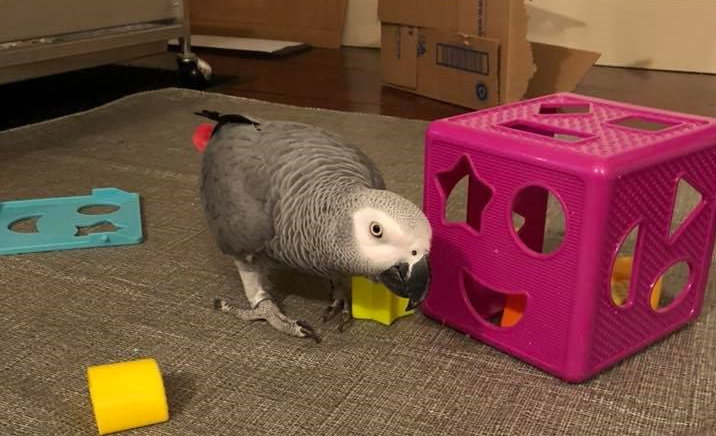
- Mirrors: The response of a parrot to a mirror is very self-dependent but many birds are interested in their reflection and can interact with it as if it were another individual
- Children’s games to think about: the goal is to propose a “problem” to the bird and to reward it if it manages to solve it. These games are ideal for EAM parrots to establish a bond with their owner who can play with them and reward them
Enrichment of the bird’s living environment

Parrot Diet & Enrichment
SOURCE: wingsNpaws
Parrot enrichment toys
-
African parrot living environment All everyday objects as long as they do not contain toxic substances for the parrot: each new object will intrigue the bird who will spend a lot of time exploring it and manipulating it in every way. Generally, the more the object is colored, the more it will interest the bird
- Food enrichment: offer larger pellets than those normally adapted to the parrot. In 2010, a study showed that Orange-winged Amazons spent almost 5 times more time feeding than normal size pellets (25.7% vs. 5.9% of their awake time). Indeed, the size of the food forces the parrot to spend more time handling his pellet with his paw and beak to break it to eat it while with normal size food, the bird has only grabbed the granulate with its beak and swallowed it directly (ROZEK et al., 2010).
- In addition, parrots seem to prefer granules larger in size than is normally expected for their size and which allow for Opodo-mandibulate movements. They will spend less time destroying their other toys (ROZEK, MILLAM 2011)
- Similarly, varying the types of food offered to the parrot (fruit, granules, seed mixtures …) allows, in addition to balancing the diet, to occupy and distract the bird who will be more interested in what is in his bowl.
Enrichment ideas for birds

Music and electronic devices: parrots are very sensitive to music or radio and some will even move to the rhythm of a melody or interact with the radio (hiss, sing, etc …).
Gabon Grays (African Grey Parrot )(P. Erithacus), to whom researchers have left tactile tablets, even learned to use these devices when they were alone to play and choose when to listen to music (PERON et al., 2012).
Thus, many ways are available to entertain the Psittacidae in captivity and the more the activities will be varied, the more the enrichment will be effective and will avoid the bird from being bored.
Moreover, accustoming the bird as early as possible to novelties makes it possible to desensitize it to the introduction of new elements to its environment as well as manipulation by new human beings (MEEHAN, MENCH 2002).
Enrichment must, therefore, be an integral part of the daily management of a parrot, as well as feeding or cleaning. The establishment of enrichment planning must be advised to the owner in order to avoid the appearance of behavioral diseases related to boredom.
A sufficiently stimulated parrot will be intellectually more balanced and more open to a relationship with its owner who can then enjoy working with his bird.
How to teach your PARROT to PAINT! (BIRD enrichment DIY)
SOURCE: Dāv Kaufman’s Animal Adventures
Related Article:

